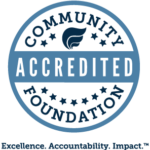ASPIRE Program: Summer Learning program helps students overcome summer learning loss and propels 100% of participants to graduate high school
Jul 12, 2021
Last week, 41 middle schoolers walked through the doors of the Ben Franklin Center in Norwalk and encountered a whole new world. Staff from ASPIRE, Family and Children’s Agency’s (FCA) after-school and summer program, transformed classrooms to represent countries across the globe, greeting students with mock airplane tickets to destinations they might never have imagined visiting. Designed to engage and inspire students in a nurturing environment, the goal of the six-week summer program is to help middle schoolers develop the academic skills, confidence, and love of learning they need to thrive during the coming school year and for the rest of their lives.

ASPIRE, a long-time grantee of Fairfield County’s Community Foundation, works with Norwalk’s middle and high school students to provide “academic engagement, parent education and social and business exposure.” Amy Jeffereis, Director of ASPIRE, calls it “a seven-year program, 12 months a year,” meaning that the objective is for students to enroll at the start of sixth grade and continue until they graduate high school.
Since the program’s inception approximately 15 years ago, ASPIRE students have exceeded expectations. “One of our biggest accomplishments is that we have 100% graduation rate for high schoolers over the course of the entire ASPIRE program,” says Lindsay Perry, FCA’s Director of Marketing and Communications. “Every single high school senior has gone on to graduate and go to college or career training.”

The summer program is a particularly important component of ASPIRE, as research shows that the underserved youth with whom they work often “have stronger summer learning loss,” says Jeffereis. In addition, the ASPIRE summer program allows staff to continue to foster the strong relationships they build with their students throughout the school year, providing one-on-one interactions that focus on each student’s individual educational and social-emotional needs. Students are exposed to hands-on learning in a recreational setting, with plenty of outdoor group activities and play.
A study published in May 2020 found that the average student loses 17-34% of the prior year’s learning during summer break. Additionally, students who lose ground during one summer are more likely to continue that loss in subsequent summers.1
July 12th marks the start of National Summer Learning Week, an initiative that underscores the “importance of keeping kids learning, safe, and healthy every summer, ensuring they return to school ready to succeed.”2 This summer, in the aftermath of a school year fraught with interruptions and uncertainty that disproportionately affected many students, education leaders have emphasized the need to “address the lost instructional and extracurricular time students may have experienced as a result of the pandemic, particularly for underserved communities.”3
While the federal government has dedicated funds to help states develop high-quality summer programs to address these needs, ASPIRE does not receive any public dollars. “We could not possibly run the program without funding from the Community Foundation and other private donors,” says Perry.
“Given the setbacks that students suffered during the pandemic, summer programs that provide intensive academic services are more critical now than ever,” emphasizes Janeene Freeman, Director of Education and Youth Development, and program leader of Thrive by 25 at the Community Foundation. “Investing in programs like ASPIRE is a key strategy that the Community Foundation employs to close the opportunity gap and reduce summer learning loss for students in our county.”
Research shows that high-quality summer programs can make a difference in stemming learning loss and closing the country’s education and opportunity gaps.4

For the middle school students attending this summer’s ASPIRE program, “Heroes and Villains Around the World,” core subjects like math and reading, as well as problem-solving and executive functioning skills, are cleverly woven into each activity. Mornings include restorative practices to engage the students socially and worksheets to get them reading and thinking. Each week focuses on a different continent, so on any given day students might figure out how to exchange American dollars for Euros to buy a snack at a French café, learn about Renaissance art by painting on their backs like Michelangelo, design and decorate floats for a Carnival parade, or celebrate Holi, India’s Festival of Colors, by throwing colored powder into the air.
The summer program builds students’ self-esteem and helps instill the “knowledge that they are capable,” says Jeffereis. Despite the barriers to success that they often face, “ASPIRE is a safe place, no matter what. It gives them the strength and courage they need to start the new school year,” she says. “It’s so important to give students the opportunities they do not have,” continues Perry, “so that they can see what is possible.”
REFERENCES:
1. School’s Out: The Role of Summers in Understanding Achievement Disparities
2. www.summerlearning.org
3. Biden-Harris Administration to Announce New Actions to Help Schools Reopen Safely and Meet Students’ Needs
4. Learning from Summer: Effects of Voluntary Summer Learning Programs on Low-Income Urban Youth

